Despite the continued resistance from climate sceptics, the urgency of the climate crisis becomes clearer by the day. And so does the realisation that, by necessity, sustainable housing will have to be an important part of its solution.
The 2016 Paris Agreement commits signatories to the goal of limiting “global warming to below 2°C, preferably to 1.5°C, compared to pre-industrial levels by 2050.” It states that to achieve this goal, the global community will need to reduce net carbon emissions to zero by at least 2050, and preferably earlier.

As the Low Carbon Living CRC points out, Australian homes generate around 13 percent of our carbon emissions. It is clear, therefore, that if we are to meet our Paris commitments, we need to reduce the carbon we use in our homes. We must embrace the concept of sustainable homes.
What is a sustainable house?
The answer to this question is not simple. Because of the complexities around supply chains, products, and design, ‘sustainable homes’ are difficult to define. In general, however, the term refers to a dwelling that required low to zero energy to build and requires low energy to heat and cool. It refers to homes that minimise negative environmental impacts on flora and fauna; moderate the use of construction materials, energy, and space; and help maximise human wellbeing.
Traditionally, across the western world, the sustainable house concept has held little sway. As time has passed, and we edge towards that 2050 zero net carbon emissions goal, its importance has grown.
Designer, specifiers, and legislators have begun to understand the importance of environmentally friendly houses. Here in Australia, for example, in 2019 energy ministers at State and Federal levels established the Trajectory for Low Energy Buildings, which sets out a plan to increase the amount of sustainable housing across the country.
Other initiatives like Sustainable House Day point to the fact that crucial importance of self sustainable homes is starting to be understood on a broad scale.
Building a sustainable home
Building environmentally friendly houses involves several considerations, including:
Energy efficient design
At the macro level, sustainable housing involves a shift from the urban sprawl (which is evident in most Australian cities) to an emphasis on medium density and light urban development, and on sustainable cities in which things like transport and amenities are accessible and well-planned.
In terms of individual dwellings, there should be recognition of the entire life cycle of a building as the most important single goal of sustainable architecture.
From that starting point, architects aiming to design energy efficient homes have several strategies at their disposal including the use of double glazing on windows, insulation, solar panels, and in-slab heating. Similarly, they have access to innovative products like Hempcrete, which is made from hemp, lime, and water; or rammed earth and straw-bale which can help reduce the thermal mass of a house. All can play a part in helping sustainable house ideas become reality.
Passive heating and cooling
The orientation of the house, thermal mass, ventilation, and insulation are all important aspects of eco house design. So are spatial zoning, shading, and glazing.
Use of recycled and sustainable house materials
Those designing sustainable homes can recycle beams and use them for sub-floor structures, use recycled outdoor brick pavers as bathroom flooring, and use low-VOC paints and finishes, locally sourced building materials, and only sustainable timber products.
Hemp houses are becoming popular because the material is resistant to insects and therefore does not need to be chemically treated with insecticide. Rammed earth and straw bale are other popular choices.
Wastewater treatment & water conservation
Sustainable homes should have showerheads, toilets, taps, etc, which are WELS rated at three stars or more. Self sustainable homes should also employ grey-water system for bathrooms, laundries, toilets, and black-water systems for gardens.
Installation of smart lighting
Well-designed sustainable homes feature smart lighting systems, which ensure lighting is only turned on when needed. They feature lighting that is wired through a C-Bus smart wiring system.
When choosing lights, householders should consider the wattage, not voltage of lightbulbs; and realise that by combining LED and CFL light fittings they can lower overall energy consumption.
Sustainable housing Australia - 8 of the best sustainable house designs
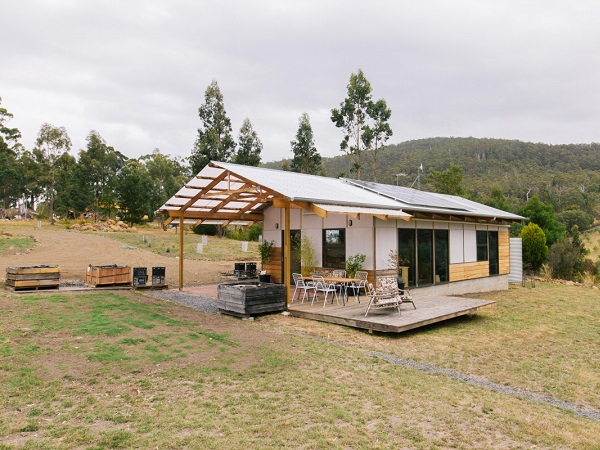
1. Apple Crate Shack
Location: Flowerpot, Tasmania
Build Date: 2018
Architect: AKA Architects
Also known as 60K House (a reference to the amount it cost to build), this sustainable house is described by its architect as “an exploration of adequacy”. A one-bedroom dwelling, it features an insulated polished concrete slab to store winter daytime heat, solar panels, and an orientation that makes the most of the winter sun.
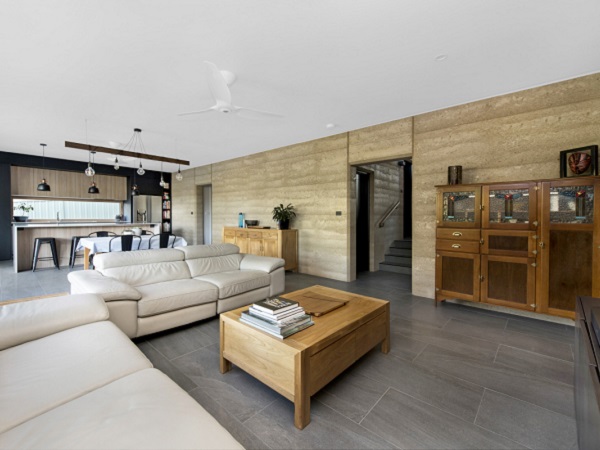
2. Waramanga Rammed Earth
Location: Waramanga, ACT
Build Date: 2018
Architect: Architecture Republic
As its name suggests, this three-bedroom sustainable house is built around a central spine of rammed earth. Boasting an 8.8-star energy rating, its passive design combines with ceiling fans, a solar heat pump and hydronic heating system to ensure comfortable year-round temperature of 20°C to 22°C.
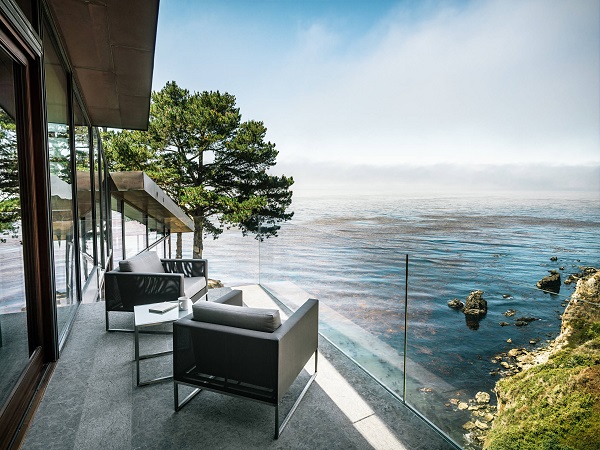
3. Fall House
Location: Big Sur Coastline, California
Build Date: 2013
Architect: Fougeron Architecture
Overlooking the Pacific Ocean, Fall House is a two storey, three-bedroom dwelling that features two rectangular boxes, connected by an all-glass library. Its copper façade provides fire protection and it also has a greywater recycling system, and energy efficient windows to reduce the reliance on artificial cooling. Its open upper box, which houses most of the living areas and kitchen, encourages ventilation.
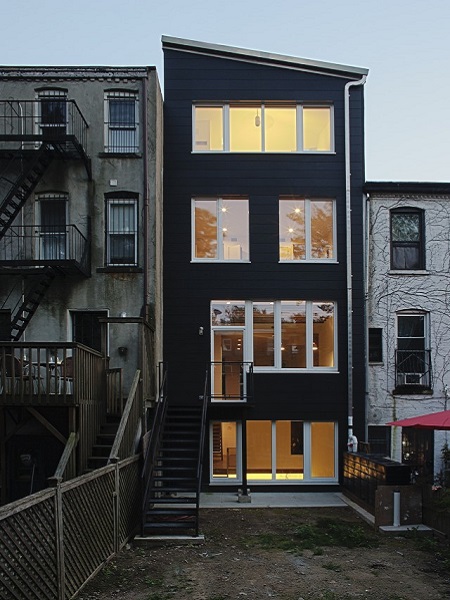
4. Tighthouse
Location: Brooklyn, New York City
Build date: 2012
Architect: Fabrica718
The first certified Passive House in New York City, Tighthouse was retrofitted by Architectural design firm Fabrica718 in 2012. As a result of this work – which included a new rear facade, an additional
story, a roof terrace, and an art studio to the house – the sustainable house now consumes 90% less heating energy (and 75% less energy overall) than a standard home.
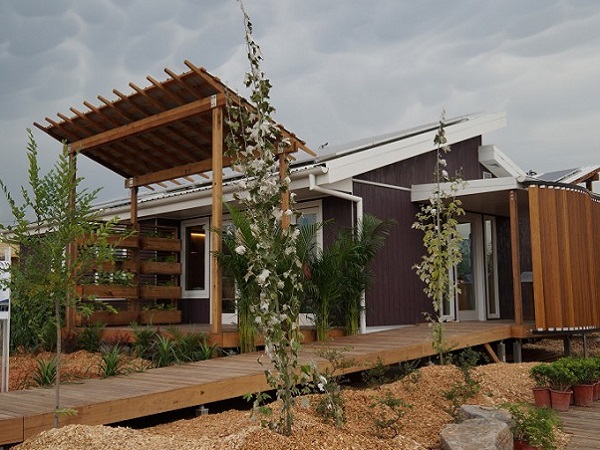
5. Illawarra Flame
Location: China
Build Date: 2013
Architect: Students from the University of Wollongong
In 2013, students from the University of Wollongong teamed and TAFE Illawarra teamed up to compete in the Solar Decathlon China 2013. They became the first in the event’s history to retrofit an existing home and transform it into a net-zero sustainable house. The entry, which ended up winning the event, featured LED lighting, rainwater harvesting and grey-water recycling systems, a 9.4-KW solar panel system on the roof, and a building management system that controls electrical appliances and stored energy.
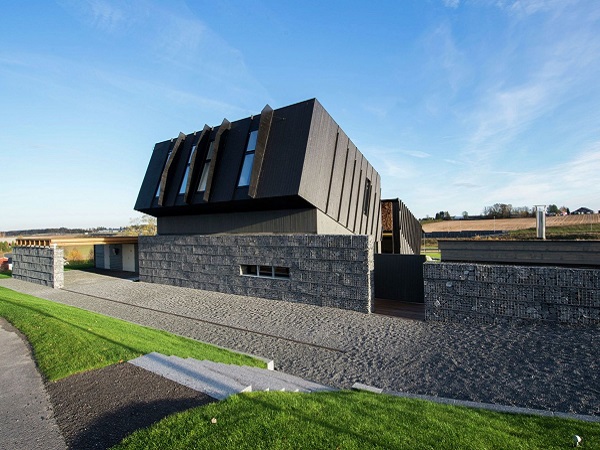
6. ZEB Pilot House
Location: Larvik, Norway
Build date: 2014
Architect: Snøhetta
Completed as a collaboration between its architects Snøhetta, Scandinavia’s largest independent research body SINTEF, ZEB partner Brødrene Dahl, and Optimera this house has 100% CO2 offsetting. As such, it has achieved ZEB-OM classification. With a total area 220sqm, it tilts towards the southeast, and has solar panels over its sloped roof to maximise the effectiveness of the system. In addition, the sustainable house features underground energy wells that complement its energy needs.
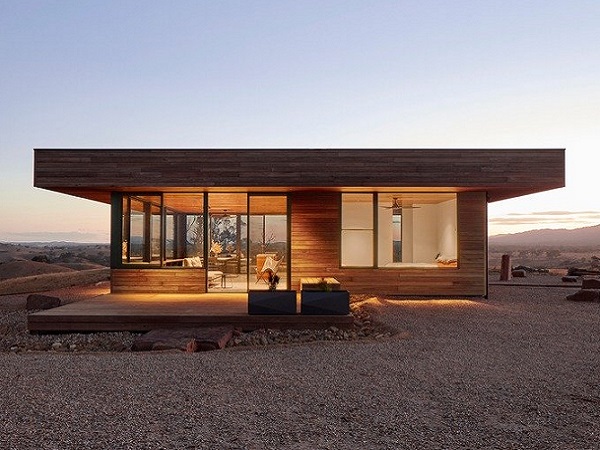
7. Elemental House, Victoria
Location: High Camp, Victoria
Build date: 2019
Architect: Ben Callery Architects
Located one hour from Melbourne at a location called High Camp, this one-bedroom off the grid sustainable house has a compact 10m x 10m footprint. Also featuring a single bathroom and living room, the home stores its own power, gathers its own rainwater and treats its own wastewater. Built in 2019 by Ben Callery Architects, it has views to die for.
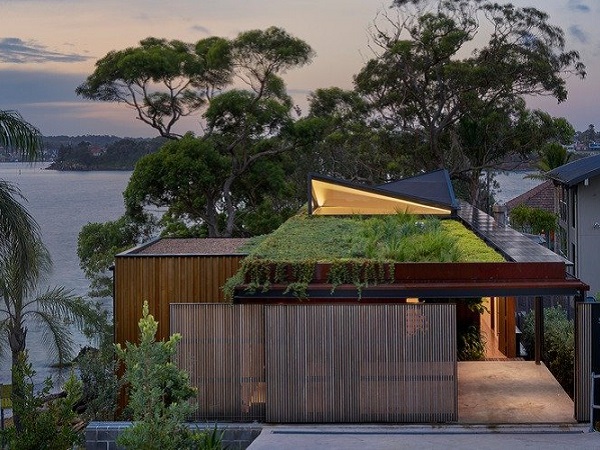
8. Bundeena Beach House
Location: Bundeena, NSW
Build date: 2019
Architect: Grove Architects
Located in Bundeena just south of Sydney, this home sits above the ocean adjacent to the Royal National Park. Designed by Grove Architects and conceived as a native garden, the sustainable house features a green roof to reduce heat absorption, a sixteen panel 5.7kW photovoltaic system and Tesla battery. Its PV panels are integrated into the house and roof garden design.

